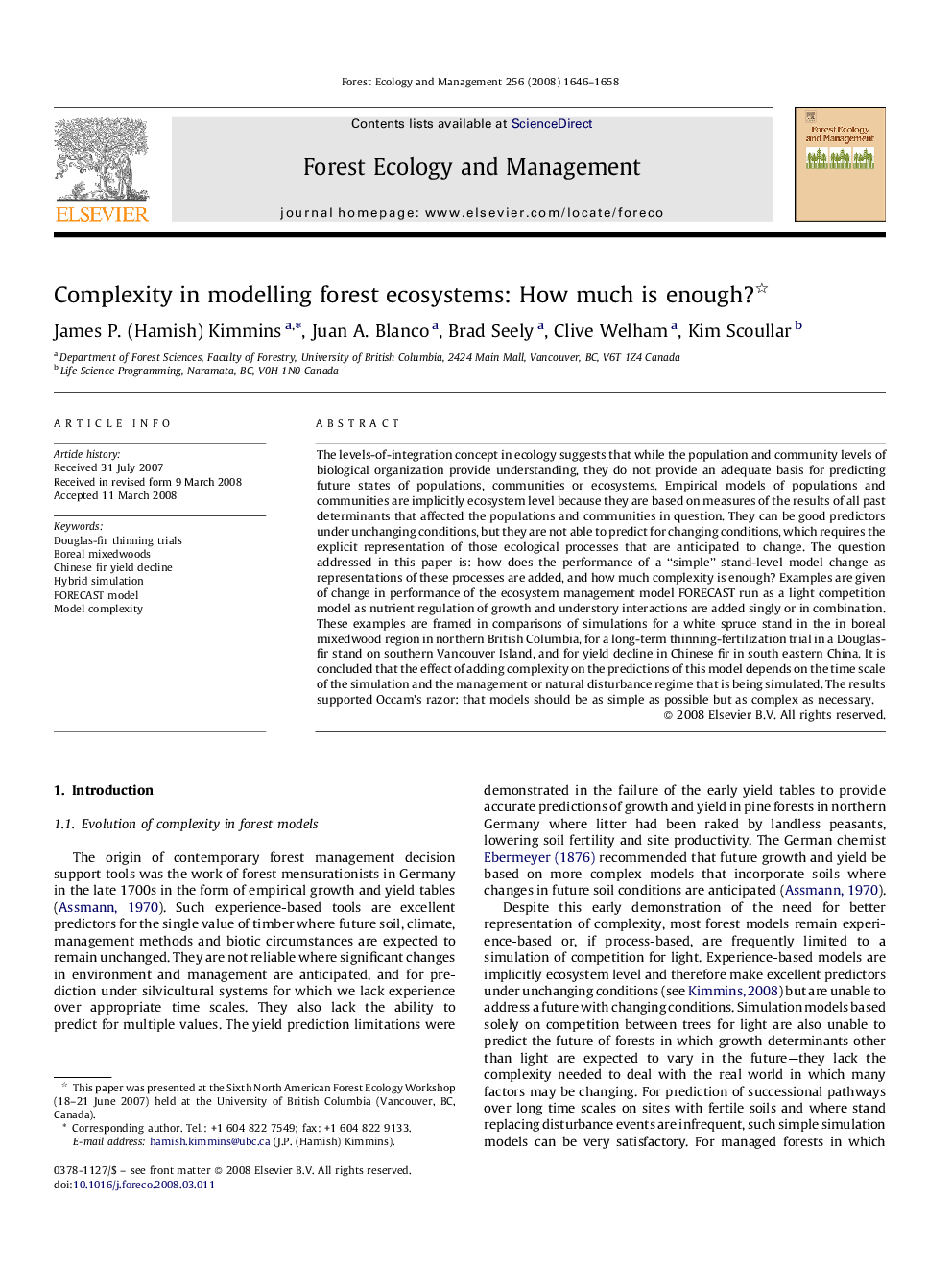| Article ID | Journal | Published Year | Pages | File Type |
|---|---|---|---|---|
| 89449 | Forest Ecology and Management | 2008 | 13 Pages |
The levels-of-integration concept in ecology suggests that while the population and community levels of biological organization provide understanding, they do not provide an adequate basis for predicting future states of populations, communities or ecosystems. Empirical models of populations and communities are implicitly ecosystem level because they are based on measures of the results of all past determinants that affected the populations and communities in question. They can be good predictors under unchanging conditions, but they are not able to predict for changing conditions, which requires the explicit representation of those ecological processes that are anticipated to change. The question addressed in this paper is: how does the performance of a “simple” stand-level model change as representations of these processes are added, and how much complexity is enough? Examples are given of change in performance of the ecosystem management model FORECAST run as a light competition model as nutrient regulation of growth and understory interactions are added singly or in combination. These examples are framed in comparisons of simulations for a white spruce stand in the in boreal mixedwood region in northern British Columbia, for a long-term thinning-fertilization trial in a Douglas-fir stand on southern Vancouver Island, and for yield decline in Chinese fir in south eastern China. It is concluded that the effect of adding complexity on the predictions of this model depends on the time scale of the simulation and the management or natural disturbance regime that is being simulated. The results supported Occam's razor: that models should be as simple as possible but as complex as necessary.
